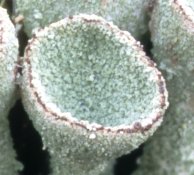xtolsniffer
Member
Dear all,
I'm a recent arrival here, I usually hang around in APUG. However, I thought I would come over and seek a bit of advice. I'm mostly a film user (range of Nikon 35mm plus an RB67) and I do all sorts, macro, landscape, portrait etc etc. I do use digital, a D700, though admittedly only when I have to as to be honest, it's a great tool, but I just don't enjoy it. I much prefer using film (Portra in a F100 and velvia in an F4, plus both in the RB67).
So here is the quandry. At the moment I scan the RB67 negatives/slides in an Epson V700. They come out just great and I can get them printed up online with a pro-lab at 12"x16" and over and they look fantastic. The 35mm scans to ne honest are a bit disappointing. I've spent a long time playing with settings and I just can't get the detail I want out of them with the V700 (no real surprises there). I would like to be able to scan them for online use and to upload for printing, and I've done a few test prints doing this and they're ok, just not as good as if I send the transparency/negative itself off for scanning and printing by the lab.
So I figure I have a range of options.
1. Keep using film and just send the ones off I like to a pro-lab to do the scanning and printing (I can get a lot scanned and printed for the cost of a new scanner)
2. Invest in a good second-hand scanner like a Nikon Coolscan LS40 (but there might be issues of operating system support)
3. Look at the newer generation Plustek or Reflecta scanners for 35mm and keep the Epson V700 for medium format.
I've been going round in circles on this, what do you think?
I'm a recent arrival here, I usually hang around in APUG. However, I thought I would come over and seek a bit of advice. I'm mostly a film user (range of Nikon 35mm plus an RB67) and I do all sorts, macro, landscape, portrait etc etc. I do use digital, a D700, though admittedly only when I have to as to be honest, it's a great tool, but I just don't enjoy it. I much prefer using film (Portra in a F100 and velvia in an F4, plus both in the RB67).
So here is the quandry. At the moment I scan the RB67 negatives/slides in an Epson V700. They come out just great and I can get them printed up online with a pro-lab at 12"x16" and over and they look fantastic. The 35mm scans to ne honest are a bit disappointing. I've spent a long time playing with settings and I just can't get the detail I want out of them with the V700 (no real surprises there). I would like to be able to scan them for online use and to upload for printing, and I've done a few test prints doing this and they're ok, just not as good as if I send the transparency/negative itself off for scanning and printing by the lab.
So I figure I have a range of options.
1. Keep using film and just send the ones off I like to a pro-lab to do the scanning and printing (I can get a lot scanned and printed for the cost of a new scanner)
2. Invest in a good second-hand scanner like a Nikon Coolscan LS40 (but there might be issues of operating system support)
3. Look at the newer generation Plustek or Reflecta scanners for 35mm and keep the Epson V700 for medium format.
I've been going round in circles on this, what do you think?









